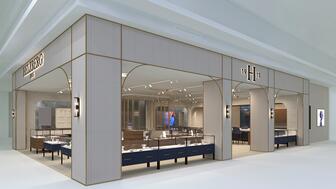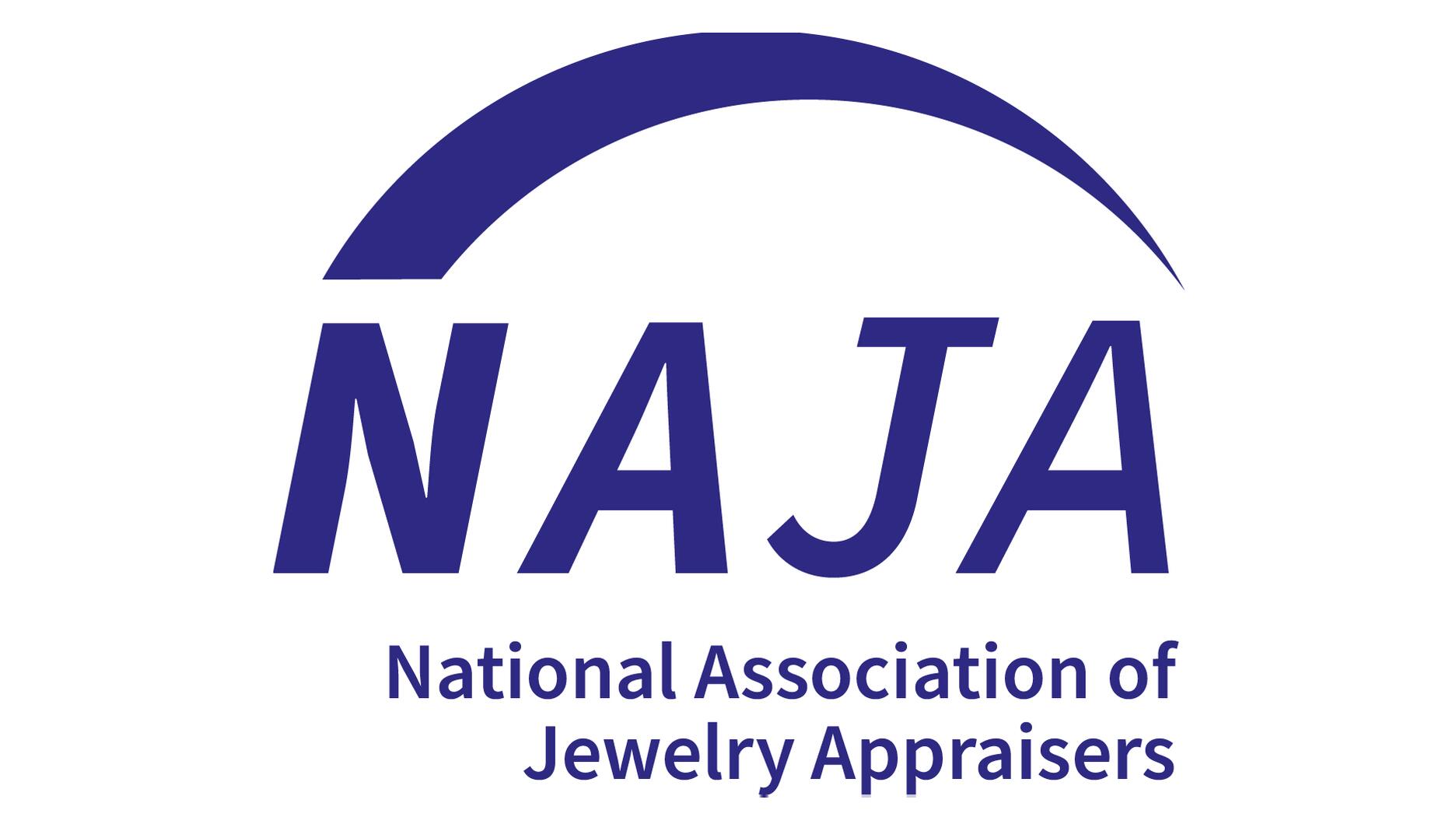In the recent multi-shipment seizure, CBP also found counterfeit Audemars Piguet, Moncler, and Chrome Hearts items.
5 Factors That Will Impact the Diamond Industry in 2025
The industry is changing as it grapples with new realities around distribution, supply, and the need for consistent, effective marketing.

So, in early 2025, there is one question everyone is asking. Where do we go from here?
National Jeweler discussed the challenges confronting the diamond industry with analysts Pranay Narvekar of Pharos Beam Consulting LLP and Paul Zimnisky, explored different perspectives presented earlier on the issue, and interviewed a few senior members of the trade in India.
Using this information, National Jeweler compiled a list of five factors that will define the diamond industry as it emerges from what could be the stormiest period it has weathered in a long, long time.
1. Greater Stability
Let’s start with the good news. The general opinion across the industry seems to be that the alarm bells may soon stop ringing.
And though midstream inventories are not yet at what can be considered “normal” levels, a degree of stability should return in the near term, perhaps as early as the second quarter of 2025.
Narvekar said, “There has been some improvement in polished sales in the U.S., and a reduction in levels of rough entering the pipeline, so midstream inventory levels have steadily been reducing.”
Zimnisky said it is a positive that the seriousness of the situation is being acknowledged and discussed.
In his February “State of the Diamond Market” report notes that, “the industry has … been proactive in curbing supply and midstream inventory levels are approaching more sustainable levels going into 2025.”
https://www.paulzimnisky.com/state-of-the-diamond-market-past-issue-index
Nevertheless, diamantaires in India are still cautious.
They say that stability has been achieved due to better correlation between supply and demand.
While there will not be a return to the volatility of 2023-2024, significant growth is not immediately visible on the horizon.
“The industry will have to get used to lower volumes and values for the foreseeable future.” — Pranay Narvekar, Pharos Beam Consulting
2. Supply Will Plateau, Demand Will Grow
There has been a steady decline in rough supply to the diamond market since the highs of 2022.
Both De Beers Group and Alrosa reported significant drops sales in 2024 and have estimated that 2025 sales may sink even lower.
Zimnisky estimates that both companies are now maintaining higher rough inventory levels as compared with a year ago.
He projects that the total annual supply of rough to the industry will be in the range of 105 to 115 million carats.
Looking ahead, Narvekar projects the supply of natural rough will continue at the current levels for the next five to seven years, at least.
“Retail consumption has remained virtually stagnant for the last 15 years or so, barring the post-COVID spike,” he said, adding, “the industry will have to get used to lower volumes and values for the foreseeable future.”
3. Rough Distribution Changes, Midstream Consolidation
Consolidation and greater coordination—these are the buzzwords for the diamond supply chain going forward.
There is a growing understanding that maintaining stability across the pipeline has to be a shared responsibility.
Meanwhile, rough distribution systems will be modified as the Okavango Diamond Company, the rough diamond sales and marketing company owned by the Botswana government, gears up to sell the additional rough that will start accruing to it, per the country’s new 10-year sales agreement with De Beers, and Angola seeks to step up its sales.
It remains to be seen what shape beneficiation will take as the industry needs to strike a balance between socio-political goals and cost-effective operations.
Dubai has emerged as a strong player in distribution, but this could change following recent modifications to taxation in India designed to simplify compliance and encourage diamond miners to do business with Indian companies.
Miners may consider direct sales to manufacturers from within the Special Notified Zones, set up by the Indian government in Mumbai and Surat, more attractive.
Consolidation also has occurred in the midstream. A sizable portion of the polishing capacity in Surat has shifted to lab-grown diamonds, and the process will continue.
The share of larger players may rise, with small and mid-sized manufacturers remaining mostly in niche areas.
“Natural and lab-grown diamonds products cannot be sold side-by-side or interchangeably, as this will just continue to lead to overall price deflation.”— Paul Zimnisky, industry analyst
4. Differentiation Needed in Lab Grown
Lab-grown diamonds are here to stay. How will they impact the emerging landscape?
A November 2024 article by McKinsey & Company titled, “The Diamond Industry Is at an Inflection Point,” outlines possible scenarios for the market.
“First, lab-grown diamonds could take over the majority of the market outside niche luxury segments,” the article states.
“Second, the price of lab-grown diamonds could drop so low they effectively become fashion accessories that no longer compete with diamonds … (and) assuming consumers cannot tell the difference between natural stones and lab-grown diamonds, all diamonds could simply go out of fashion.”
Zimnisky stressed that clear differentiation is needed.
“Natural and lab-grown diamonds products cannot be sold side-by-side or interchangeably, as this will just continue to lead to overall price deflation for the larger category, which has negative consequences for the whole supply chain.”
Narvekar reiterated the warning he issued in 2022—lab grown is not a diamond business.
“It has to be marketed as a distinct product, not as a substitute for a natural or else both may be dragged down,” he said.
Zimnisky said there is room for both.
According to his calculations and estimates, “approximately 40 percent of current man-made diamond sales are incremental to the larger diamond industry, and forecasted to amount to some $7 billion in 2024, i.e., these are diamond sales that would not exist if lab-grown diamonds did not exist.”
“The overall size of the market has to grow. We need marketing to keep the ‘diamond dream’ alive.”— Pranay Narvekar, Pharos Beam Consulting
5. Bigger Budgets, Better Marketing?
Who will shoulder the burden of promoting diamonds to the public?
The emerging consensus is that the entire pipeline should become collective custodians of protecting the “diamond dream.”
On one side, De Beers, alongside its efforts under the Natural Diamond Council, initiated marketing and promotion collaborations with major retailers across key markets—the United States (Signet Jewelers), India (Tanishq), and China (Chow Tai Fook)—in 2024.
In India, this went a step further, with the miner collaborating with the Gem & Jewellery Export Promotion Council to launch the India Natural Diamond Retailer Alliance (Indra), a platform to involve small and mid-sized retailers in the effort.
On the other, a proposal floated at the Dubai Diamond Conference last year by midstream organizations including the Antwerp World Diamond Centre, the Gem & Jewellery Export Promotion Council, and the Dubai Multi Commodities Centre to expand the budget for marketing diamonds with contributions of a fixed minimal percentage on every sale of rough has been broadly welcomed.
The idea, if it gets formalized, will ensure that there will be a more consistent stream of money spent on marketing diamonds over a prolonged period of time.
Narvekar is clear that without such an increase in marketing and promotion, the future remains dim. He pointed out that the total amount the entire diamond industry spends on marketing is less than what one single company, Apple, allots to this vital facet of business.
“The overall size of the market has to grow. We need marketing to keep the ‘diamond dream’ alive,” he concluded.
The Latest

Helzberg’s Chief Retail Officer Mitch Maggart shared details about its tests of a new store concept rooted in an elevated luxury experience.

Jewelers of America execs and National Jeweler editors discuss tariffs, the sky-high gold price, and the engagement that broke the internet.

How Jewelers of America’s 20 Under 40 are leading to ensure a brighter future for the jewelry industry.

The luxury goods company said founder Ippolita Rostagno will remain at the brand’s helm.


Laura Burdese, who joined the Italian luxury brand in 2022, will take on the role in July.

The National Jeweler editors revisit the most noteworthy industry happenings and design trends from 2025.

Roseco’s 704-page catalog showcases new lab-grown diamonds, findings, tools & more—available in print or interactive digital editions.

Need a gift for the cat lover who has everything? Look no further than our latest Piece of the Week.

It purchased the “Grosse Pièce,” an ultra-complicated Audemars Piguet pocket watch from the ‘20s, for a record-breaking price at Sotheby’s.

The lab-grown diamond grower now offers custom engagement and fashion jewelry through its Kira Custom Lab Jewelry service.

Chandler got his start at Michelson Jewelers and has served as DCA president and CEO since 2001. He will retire at the end of the month.

The boutique is slated to open this week inside Terminal 8, offering pre-owned Rolex watches and more to international travelers.

Sponsored by Digital Monitoring Products

The special-edition egg pendant ingested in a New Zealand jewelry store was recovered after a six-day wait.

Associate Editor Natalie Francisco plays favorites with Piece of the Week, selecting a standout piece of jewelry from each month of 2025.

The “Love and Desire” campaign is inspired by the magic that follows when one’s heart leads the way, said the brand.

Two awardees will receive free tuition for an educational course at the Swiss lab, with flights and lodging included.

Berta de Pablos-Barbier will replace Alexander Lacik at the start of January, two months earlier than expected.

Sotheby’s held its first two jewelry sales at the Breuer building last week, and they totaled nearly $44 million.

Winners will receive free registration and lodging for its fourth annual event in Detroit.

Here are six ideas for making more engaging content for Instagram Reels and TikTok, courtesy of Duvall O’Steen and Jen Cullen Williams.

The honorees include a notable jewelry brand, an industry veteran, and an independent retailer.

Carlos Jose Hernandez and Joshua Zuazo were sentenced to life without the possibility of parole in the 2024 murder of Hussein “Sam” Murray.

Yood will serve alongside Eduard Stefanescu, the sustainability manager for C.Hafner, a precious metals refiner in Germany.

The New Orleans jeweler is also hosting pop-up jewelry boutiques in New York City and Dallas.

Set in a Tiffany & Co. necklace, it sold for $4.2 million, the highest price and price per carat paid for a Paraíba tourmaline at auction.


























